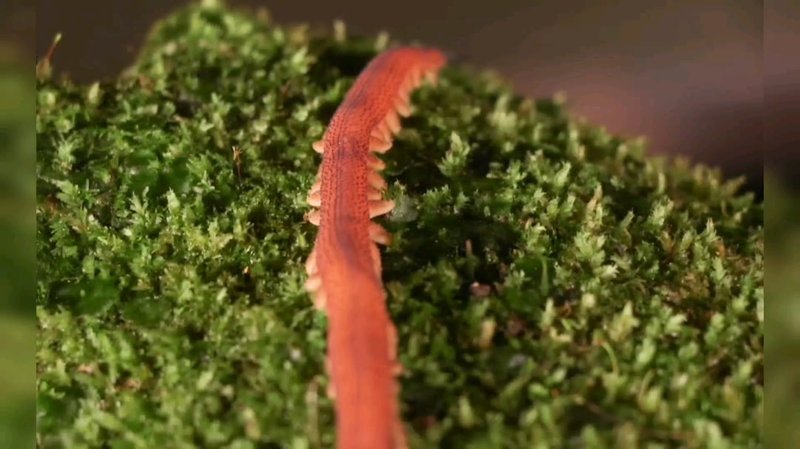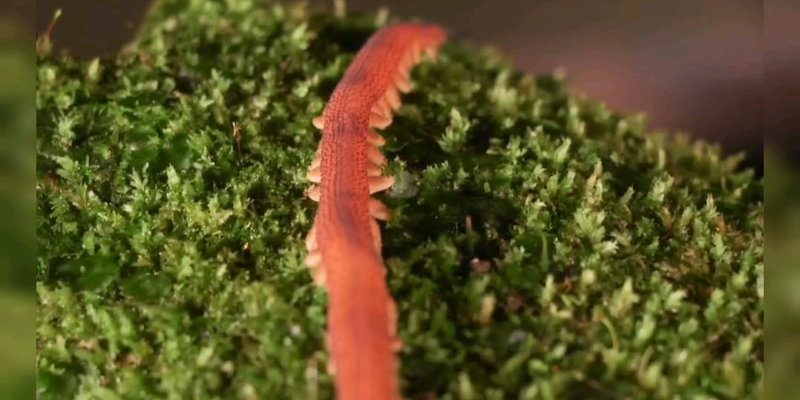
Velvet worms, or *Onychophorans*, are unique creatures that thrive in moist environments, often found in leaf litter or under logs. Their tracks can be a clue to their hidden world, revealing their feeding habits and movements. Let’s dive into how you can observe these intriguing tracks and trails, and why they matter in the bigger picture of our ecosystem.
Understanding Velvet Worms
First things first: let’s get to know velvet worms a bit better. These little guys may look like the lovechild of an earthworm and a caterpillar, but they’re in a class all their own. With their soft, velvety bodies and many legs, they glide through their habitats with an almost magical grace. You might be wondering what exactly they do. Well, they play a crucial role in their ecosystems by preying on insects and helping to recycle nutrients back into the soil.
Aside from their roles in the environment, velvet worms also possess some pretty cool adaptations. Their slimy, adhesive slime allows them to capture prey effortlessly. Think of it like a sticky trap that they can shoot out to snag dinner! So next time you see one of their tracks, remember there’s a whole story happening right under your feet.
Where to Find Velvet Worm Trails
Now that you’re familiar with velvet worms, where do you start looking for their tracks? These fascinating trails are typically found in humid areas where the worms thrive. You’ll want to explore:
- Dense forests with plenty of leaf litter
- Moist environments like rainforests
- Underneath decaying logs and rocks
- Areas with lots of vegetation to provide cover
When you’re out exploring, keep an eye on the ground. Velvet worm trails often look like squiggly lines, sometimes winding back and forth or appearing as tiny dots. They can be quite subtle, so patience is key. If you take a moment to stop and look, you might find yourself marveling at these little wonders of nature.
How to Observe and Document the Trails
Observing velvet worm tracks can be a rewarding experience. But how do you go about documenting what you find? Here are some steps to get you started:
1. **Bring a Notebook**: Jot down the date, location, and any observations about the trail. Was it straight, wavy, or looped?
2. **Take Photos**: A picture is worth a thousand words. Capture the trail and its surroundings for reference later.
3. **Use a Measuring Tape**: If you want to get precise, measuring the length and width of the trails can help you understand their patterns better.
4. **Sketch the Trails**: If you enjoy drawing, consider making a sketch. It’s a great way to engage with what you’re observing.
Each trail tells a story of where the velvet worm has been, providing insights into their behavior and habitat preferences.
Why Velvet Worm Tracks Matter
You might be surprised to learn how important observing these tracks can be. Velvet worms, despite their small size, play significant roles in maintaining healthy ecosystems. By studying their trails, we can gain insights into biodiversity and environmental health.
When researchers observe these trails, they can start connecting the dots about the ecosystem’s balance. Healthy populations of velvet worms can indicate good soil quality and a rich insect population, which are vital for sustaining larger wildlife and plant life.
Additionally, tracking their movements can help scientists monitor changes in the environment, such as habitat destruction or climate change effects. So, your curiosity about these trails can contribute to a larger understanding of ecological health!
Common Misconceptions About Velvet Worms
As you dive deeper into the world of velvet worms, you may encounter some misconceptions. Here are a few things to clarify:
– **Not Insects**: While velvet worms may look similar to certain insects, they belong to a separate class entirely. They have more in common with snails and octopuses than flies and beetles.
– **Gentle Creatures**: Despite their hunting skills, velvet worms are harmless to humans. They won’t bite or sting; instead, they play a significant role in the food chain.
– **Not Just for Scientists**: Observing velvet worm trails doesn’t require a biology degree! Anyone with a sense of curiosity can appreciate these tracks and contribute to our understanding of their ecosystems.
With these clarifications in mind, you might feel more empowered to explore their world without any misconceptions holding you back.
Comparing Velvet Worms to Other Creatures
When observing tracks, it’s interesting to compare velvet worms to other similar creatures in your environment. For instance, earthworms leave behind smooth trails in the soil, while slugs create a distinct slime trail. Here’s a quick comparison:
| Creature | Track Appearance | Habitat |
|---|---|---|
| Velvet Worms | Wavy, squiggly lines | Moist forest floors |
| Earthworms | Smooth, shallow trails | Loamy soil |
| Slugs | Wet, slimy trails | Gardens, damp areas |
Each of these creatures contributes uniquely to their habitats. By understanding how their tracks differ, you can appreciate the biodiversity around you and the roles various organisms play.
Tips for Engaging with Velvet Worms in the Field
If you’re eager to observe velvet worms and their tracks, here are a few handy tips to enhance your experience:
– **Be Quiet**: These creatures are sensitive to noise. Moving slowly and quietly enhances your chances of spotting them.
– **Time of Day**: Velvet worms are typically more active during humid nights, so consider evening explorations.
– **Respect Their Space**: If you happen to find a velvet worm, admire it from a distance. Handling them can stress the animal and disrupt its natural behavior.
Engaging with nature is all about respect and curiosity. By following these tips, you’ll create a more enriching experience for yourself and the creatures you observe.
In conclusion, observing velvet worm tracks and trails opens a window into a hidden world full of life and mystery. These small but mighty creatures are important for our ecosystems, and taking the time to notice their trails can enhance our understanding of nature. So, next time you’re out in the woods, keep your eyes peeled for those squiggly lines—they might just lead you on an adventure you didn’t expect!

